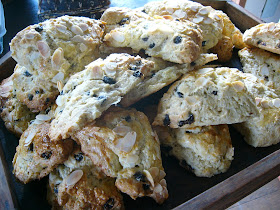
August 20-24 helped managed
Shinobara-no-
Sato (篠原の里) in
Fujino,
Kanagawa.
Shinobara-no-
Sato is a community center that
Itonaga-
sensei's research studio helped establish in 2002. Every summer students from
Itonaga-
sensei's research studio help manage the center. It hosts works shops and functions somewhat like a youth hostel. On August 23 was 大石神社祭典, a local, annual festival where the god that lives in
Ohishi Shrine (大石神社) is taken for a walk around the village in an
Omikoshi (御神輿) carried by the villagers. Functions somewhat as a blessing for the homes, farms, and people in the village. This is the
third year I've had the
opportunity to participate in the festival.

August 26-29 attended the Architectural Institute of Japan's Annual Conference. The conference takes place in a different location in Japan every year, and this year the conference was held in Sendai in Northern Japan.

定禅寺通 (
Jozenji Dori) street in Sendai known for its tree canopy which shades the street below to combat the heat island effect of urban areas.

まちなか農園藤坂 (Urban Farm
Fujisaka) located in Sendai city
strengthens the community through urban gardening.
 August 20-24 helped managed Shinobara-no-Sato (篠原の里) in Fujino, Kanagawa. Shinobara-no-Sato is a community center that Itonaga-sensei's research studio helped establish in 2002. Every summer students from Itonaga-sensei's research studio help manage the center. It hosts works shops and functions somewhat like a youth hostel. On August 23 was 大石神社祭典, a local, annual festival where the god that lives in Ohishi Shrine (大石神社) is taken for a walk around the village in an Omikoshi (御神輿) carried by the villagers. Functions somewhat as a blessing for the homes, farms, and people in the village. This is the third year I've had the opportunity to participate in the festival.
August 20-24 helped managed Shinobara-no-Sato (篠原の里) in Fujino, Kanagawa. Shinobara-no-Sato is a community center that Itonaga-sensei's research studio helped establish in 2002. Every summer students from Itonaga-sensei's research studio help manage the center. It hosts works shops and functions somewhat like a youth hostel. On August 23 was 大石神社祭典, a local, annual festival where the god that lives in Ohishi Shrine (大石神社) is taken for a walk around the village in an Omikoshi (御神輿) carried by the villagers. Functions somewhat as a blessing for the homes, farms, and people in the village. This is the third year I've had the opportunity to participate in the festival. August 26-29 attended the Architectural Institute of Japan's Annual Conference. The conference takes place in a different location in Japan every year, and this year the conference was held in Sendai in Northern Japan.
August 26-29 attended the Architectural Institute of Japan's Annual Conference. The conference takes place in a different location in Japan every year, and this year the conference was held in Sendai in Northern Japan. 定禅寺通 (Jozenji Dori) street in Sendai known for its tree canopy which shades the street below to combat the heat island effect of urban areas.
定禅寺通 (Jozenji Dori) street in Sendai known for its tree canopy which shades the street below to combat the heat island effect of urban areas. まちなか農園藤坂 (Urban Farm Fujisaka) located in Sendai city strengthens the community through urban gardening.
まちなか農園藤坂 (Urban Farm Fujisaka) located in Sendai city strengthens the community through urban gardening.






















